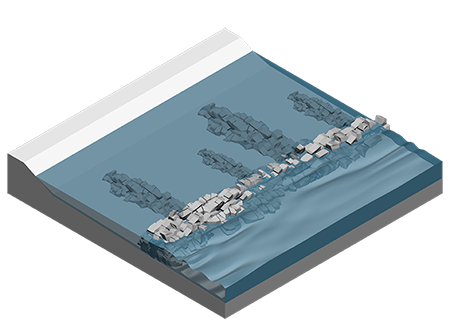

Some parts of the United States have a Living Shoreline Suitability Model available to assist in determining the best types of living shorelines to use at a site. There is no one solution type that is appropriate across the board. Maximize your route-density to avoid wasting gas.Proximity to boating navigational channel. Existing shoreline structures and shoreline type. To determine which type of living shoreline is most appropriate in a given location, it is important to consider these factors: The advantage of using a combination of solutions is that these can be tailored to withstand the energy level of the site. There are several types of living shorelines and/or hybrid options including those with vegetation, oyster shell, native limestone riprap, terracing and retaining walls.

7 Recreational and aesthetic opportunities are also enhanced, as property owners can maintain or develop a kayak launch, fish from their shores and watch wildlife and enjoy the natural view of coastal areas. 5Īlthough a mature salt marsh can take 40-80 years to fully develop, 6 storm protection benefits can be seen in as little as four to nine years post-installation. In Florida, a hectare (2.5 acres) of salt marsh, which is only one type of living shoreline, is valued at $8,236 USD per year in hurricane damage reduction, and this value increases over time as components establish. Property owners will save money in the long run because these features require less maintenance and replacement than seawalls. In addition to these characteristics, living shorelines also provide benefits such as continuity of ecosystem processes, enhancement of wildlife habitat, nutrient and pollutant reduction, absorption of wave energy, storm resilience and adaptation to sea level rise. 4 Although not all coastal armoring is attributable to sea level rise-some is simply based on past engineering practices-the resulting natural habitat loss is the same.Īn alternative to this armoring, called a living shoreline, is starting to gain traction among some property owners, especially those who are concerned about the resiliency of their erosion control methods.Īccording to the National Oceanic and Atmospheric Administration, a living shoreline is a shoreline management practice that provides erosion control benefits protects, restores, or enhances natural shoreline habitat and maintains coastal processes through the strategic placement of plants, stone, sand fill and other structural organic materials such as biologs or oyster reefs. 3 A particularly heavily armored area is in Palm Beach County, Florida, where 70% of the Lake Worth Lagoon shoreline is comprised of seawalls. 2 In the U.S., approximately 14% of the total shoreline has already been hardened-two-thirds of which is along the southern Atlantic and Gulf coasts. In some coastal cities, such as Sydney, Australia, as much as 50% of the shoreline is armored. A rise in coastal armoring has resulted in a direct loss in natural shoreline. This pressure to armor coastlines becomes more intense as neighbors armor their properties. Homeowners may feel that the only solution to protect their property is to build traditional seawalls. In addition, sea level rise can cause “squeeze” of coastal habitats, which is defined as an intertidal habitat loss due to the high-water mark being fixed by a defense and the low water mark migrating landwards in response to sea level rise, 1 and loss of property, while major storms can cause immediate destruction. Population density continues to grow in areas that contain fragile environments, and as a result, coastal ecosystems and their provisional services are in decline. The majority of the global population is now urban and located near coastlines and waterways, and these dense concentrations exert a disproportionate influence on environments and ecosystem function. The need for connections between constructed and natural systems is becoming increasingly urgent.


 0 kommentar(er)
0 kommentar(er)
